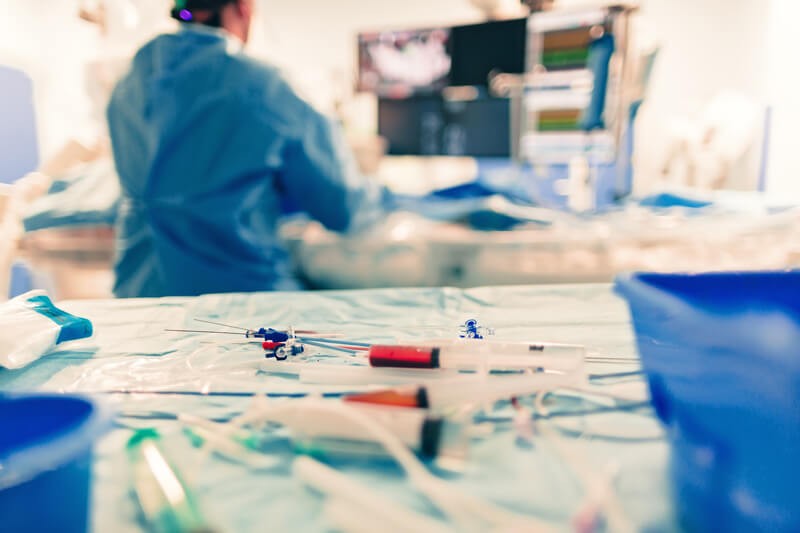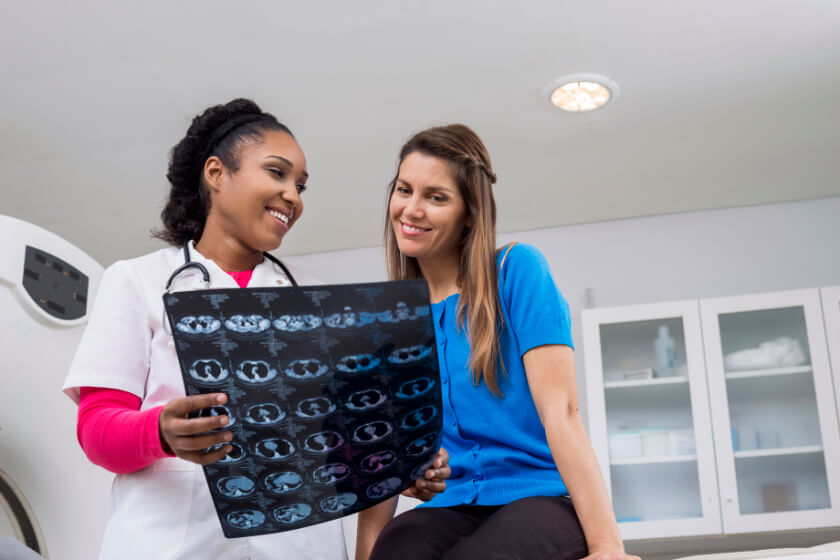
What is Contrast Material and How Does it Work?

If you have ever undergone medical imaging, such as an MRI or CT scan, chances are good that you received contrast.
MRIs (magnetic resonance imaging) and CT (computed tomography) are types of medical equipment that creates image of internal organs and structures. Contrast material enhances and improves the quality of these images. Contrast material can also improve the quality of some ultrasound and x-rays. In many cases, the use of contrast can help the radiologist distinguish normal from abnormal conditions.
Contrast material works by temporarily changing the way the imaging machine interacts with the body. Some types of contrast slow down x-ray beams. Other types of contrast temporarily affect the magnetic properties of certain atoms inside your body.
Contrast materials make certain body tissues and structures appear different on the images than they would without the contrast. The materials help “contrast,” or distinguish, specific areas of the body from the surrounding tissue. Contrast materials improves visibility of blood vessels, tissues and specific organs to help doctors diagnose medical conditions.
Contrast materials enter your body in one of three ways for the test:
- By mouth
- Rectally, by enema
- Injected into a blood vessel
Following the imaging exam, your body either absorbs the contrast material or eliminates it through urine or stool. The contrast is not permanent, so it does not discolor your organs forever.
Not all imaging tests require the use of contrast materials, as today’s advanced technology already produces sharp and clear images. Your doctor will specify whether your MRI or other imaging test is with or without contrast. In some cases, doctors request the imaging tests be done with and without contrast.
Types of Contrast
There are several different types of contrast materials, and each works in a different way.
Barium-sulfate and iodine-based compounds, for use in x-ray and CT imaging exams
Contrast materials can include components that have a chemical structure that includes iodine, which is a naturally occurring chemical element. This type of contrast is injected into blood vessels, in the fluid spaces of the spine or inside the rubbery discs that cushion the bones of the spine, and into other body cavities.
Barium-sulfate compounds are the most common contrast materials administered orally, but it can also be administered rectally. Barium-sulfate compounds are available in several forms, including powder that is mixed with water before administration, liquid, paste and tablet.
X-rays and CTs work by passing an x-ray beam through your body to an x-ray detector, which absorbs the x-rays to create an image. Depending on their density, your bones and body tissues can also absorb the x-ray to slow the beam down or stop it completely. In this way, the x-ray beams form “shadows” that represent the tissues and organs on the images.
Iodine-based and barium-sulfate contrast materials limit or block the x-rays’ ability to pass through the tissue. This changes how the blood vessels, organs and other body tissues containing the iodine-based or barium-sulfate compounds appear in the x-ray or CT images.
Doctors typically request the oral administration of barium-sulfate contrast materials to enhance x-ray and CT images of the gastrointestinal tract, including the pharynx and esophagus, stomach, small intestine or large intestine, also known as the colon. Physicians typically order rectal administration of barium-sulfate contrast to enhance x-ray and CT scans of the small intestine and colon. Clinicians order the intravenous injection of iodine-based contrast to enhance x-ray and CT images of internal organs, such as the heart and lungs, gastrointestinal tract, arteries and veins, the brain, breast tissue and soft tissues of the body, such as muscles and fat.
Gadolinium
Gadolinium is the key component in the most frequently used MRI contrast material. MRIs use powerful magnets that affect protons, which are parts of a proton that have a positive electrical charge. Protons are constantly spinning, but usually different rates and angles, depending on the various properties of the tissue; in other words, protons in a healthy bit of tissue might spin differently than do the protons of unhealthy tissue. The magnetic field causes the protons to spin out of equilibrium. When the magnetic field is turned off, the protons realign with the magnetic field at different rates, depending on the type of tissue; they also release different amounts of energy, depending on tissue type.
Gadolinium alters the magnetic properties of water molecules to increase the speed at which protons realign with the magnetic field; the faster the protons, the brighter the image.
Doctors order the intravenous injection of gadolinium to enhance MRI images of internal organs, gastrointestinal tract, blood vessels, the brain, breast tissue and soft tissues of the body.
Saline (salt water) and air also make good contrast materials in imaging exams. Ultrasound imaging, especially ultrasound imaging of the heart, may use microbubbles and microspheres that help organs and tissues appear brighter on ultrasound. These contrast materials are suitable for assessing how well blood moves through organs, detecting blood clots, finding abnormalities in the heart, and detecting masses in the liver or kidney.
For more information about contrast materials used in various types of imaging tests, talk with your doctor or radiologist. The more you know about your medical imaging, the more control you will have over your medical care and health.





